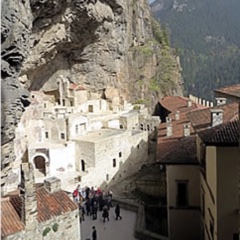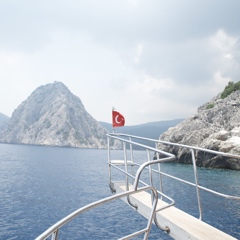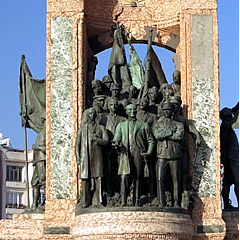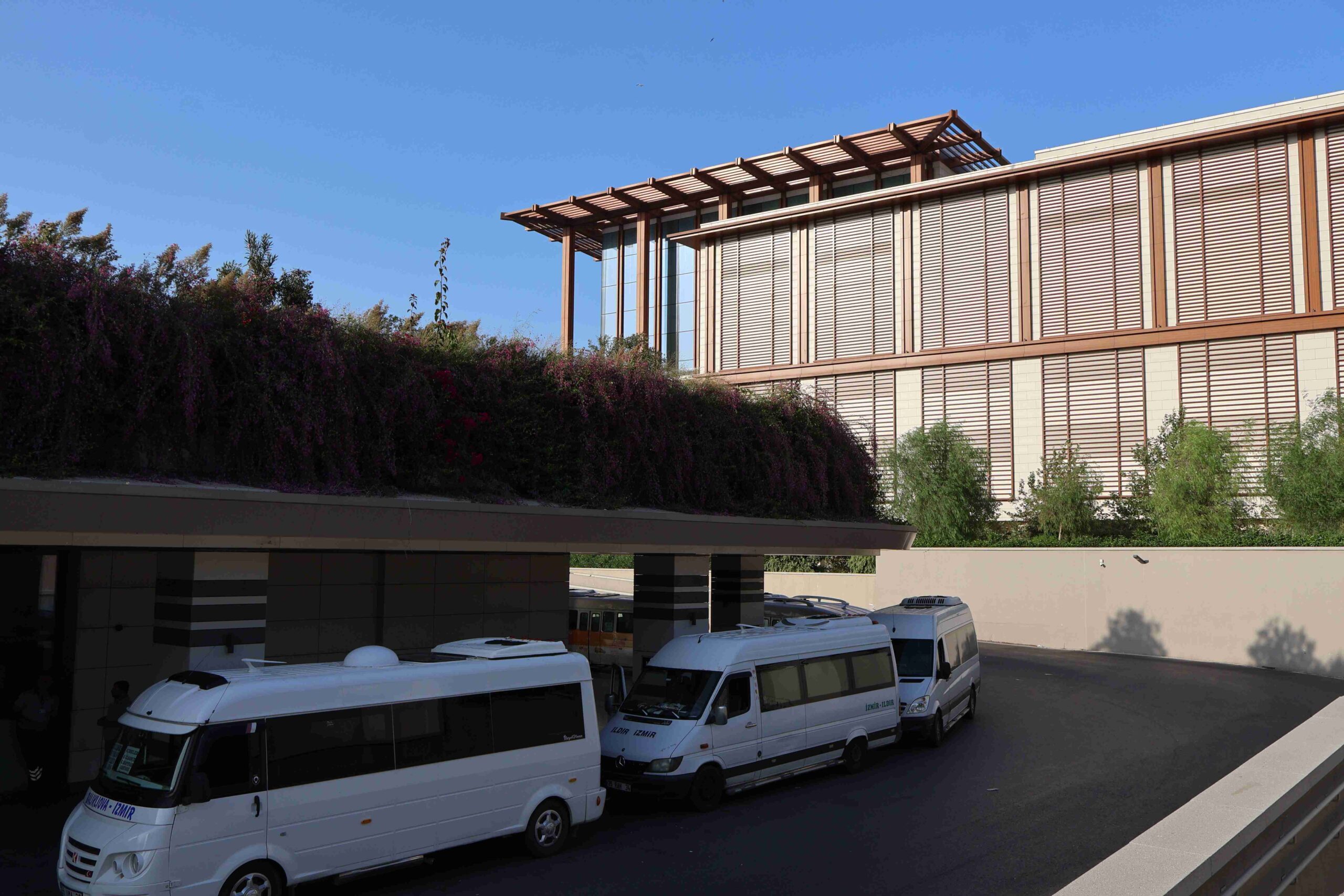
A Turkish dolmuş, spelled as "dolmush.", is a jitney, a shared taxi or minibus running a pre-determined route, with each passenger paying only a portion of the normal fare.
The word dolmuş means "filled." and is used because a dolmuş (minibus) waits at the beginning of its route until most or all of its seats are filled.
Although their use is declining, dolmushes still operate within and between cities and nearby towns and villages—in short, anywhere where a small-vehicle shared transport makes sense. As a result, it is a favored transportation method in beach resort towns in Turkey. So, if you are visiting Çeşme, Bodrum, or Muğla, chances are you will encounter a dolmuş.
What is the Difference Between Dolmushes and Public Buses?
The biggest difference between dolmushes and public buses is that you must pay with cash in a dolmush, while you can only use a public transportation card (or credit card in some cities, such as Izmir) in a public bus.
The second difference is that while dolmushes operate between a fixed route, they can decide where to stop for their passengers. In contrast, public buses can only stop at their pre-designated stops.
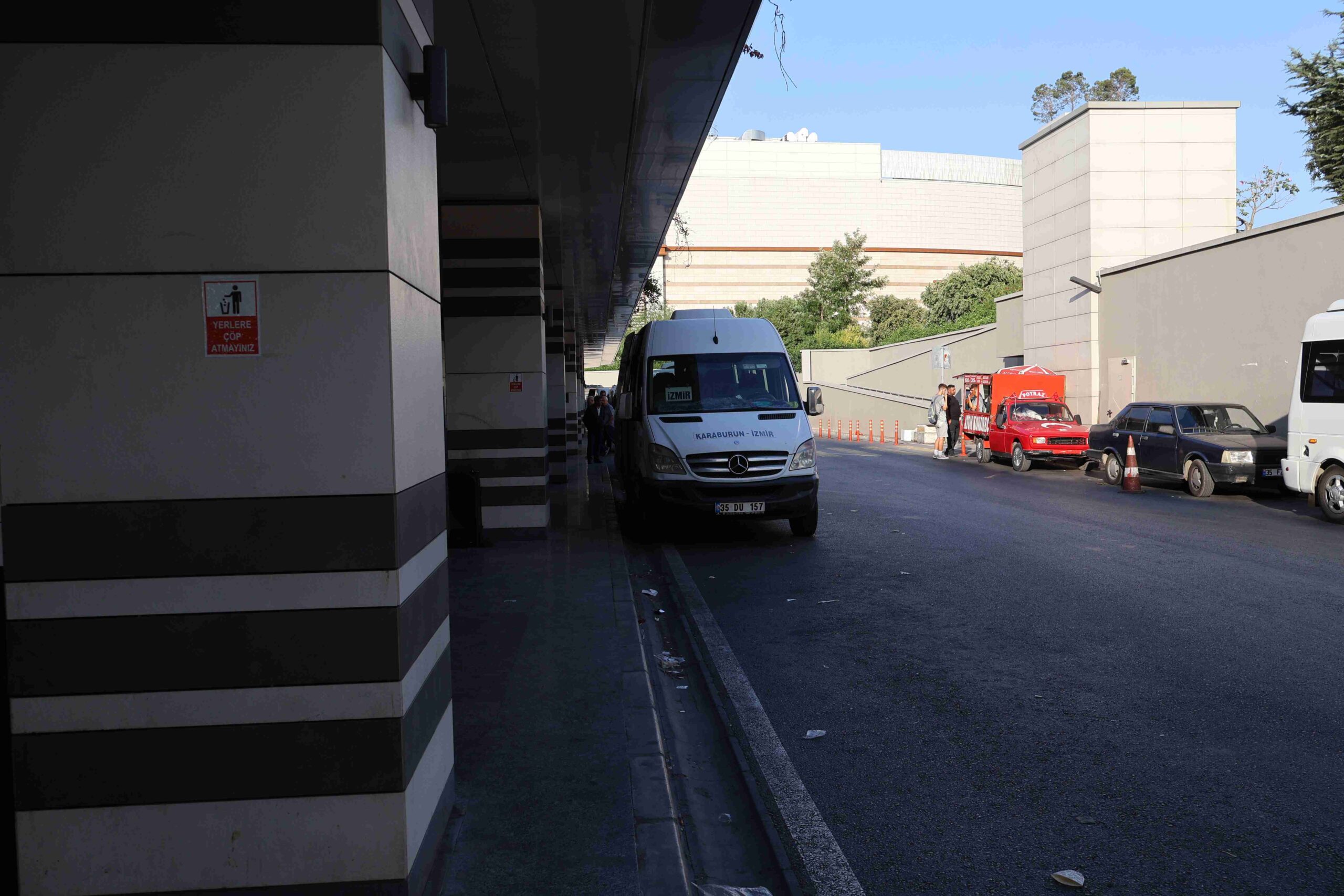
Where to Find Dolmuş in Turkey
Finding a dolmuş can be tricky since they are difficult to spot on international map applications such as Google Maps or Yandex Maps. Small cities and country towns may have a dolmuş (minibus) terminal as well as an inter-city bus terminal. Sometimes they're in the same place, sometimes not. Larger cities may have several dolmush terminals in different parts of the city. So, how can you find a dolmush while traveling in Turkey?
In the center, there may be legally designated dolmush stops, usually marked by blue signs bearing a big white "D", and dolmushes may be forbidden to stop anywhere else to let passengers in or out. On the outskirts and in less heavily trafficked locations, you may stop a dolmush wherever you like.
In Small Beach Resort Towns
Dolmushes are manageable to use in small beach resort towns with fewer routes to worry about. Just find the blue sign with the big white "D" symbol, and you will spot a dolmush within minutes.
In Big Cities
While getting on a dolmush is easy in small towns, in big cities, dolmush route systems tend to be many and varied and meaningful only to local residents. Signboards in the front window or atop the vehicle indicate the destination and usually a few major points along the route, which can confuse travelers unfamiliar with the city and the language. We recommend only using a dolmush in a big city if you know the route beforehand.
How to Travel with a Dolmuş
Although most dolmush routes are of little use to a visitor in a big city, some can be very handy, especially in small towns, and you can often save time and money using dolmushes on routes that fit your travel plans.
For example, in many beach resorts, dolmush minibusses are the most common way to travel between hotels, beaches, and the town center.
However, remember that fares vary depending on location but typically cost the same as a one-way fare on other forms of transportation (bus, metro, tram, etc.) However, city-to-village routes, which tend to be longer, may have higher fares but still far less than a private taxi (though usually a bit more than city bus fare.
To travel with a dolmush;
- Find the Dolmush stop, marked by the blue signs bearing a big white "D", and read the front-window signboards as they come along.
- When you spot the dolmush, wave to the driver of one that's going your way. If you can't find the dolmush stop, wander to the main road and try to wave as they pass.
- Get in and take a seat. The driver collects fares and makes changes as he drives, often making for a thrilling ride. If you need to be closer to hand the fare to him, hand it to someone in front of you, and they'll give it to the driver.
- If you don't know the fare, watch what others pay and pay the same, or give the driver a note, and you'll get change. Or, as a last resort, ask Bilet ne kadar? ("How much is a ticket?") and someone will help you.
- Try not to give a high-value note (worth more than 50TL), as this makes life more difficult for the driver. But if you must, you must.
- When you want to get out, say "Inecek var!" (een-eh-JEHK vahr), meaning "Someone wants to get out!"
- You might hear other passengers saying, "Müsait bir yer…" which means "At a permitted place…[I want to get out]," which comes to the same thing but is more difficult for non-Turkish speakers to pronounce.
Try it! The first time you ride in a dolmush, you'll be filled with trepidation, but after the first time, we assure you it'll all be quite easy!

Travel Like the Locals: Hop on a Dolmuş
Using a dolmush in Turkey can be tricky if you are unfamiliar with the process. However, they can come in handy when traveling in small beach resort towns.
Remember to follow the steps outlined in this article, and you will be good to go!
—by Tom Brosnahan, updated by Can Turan



